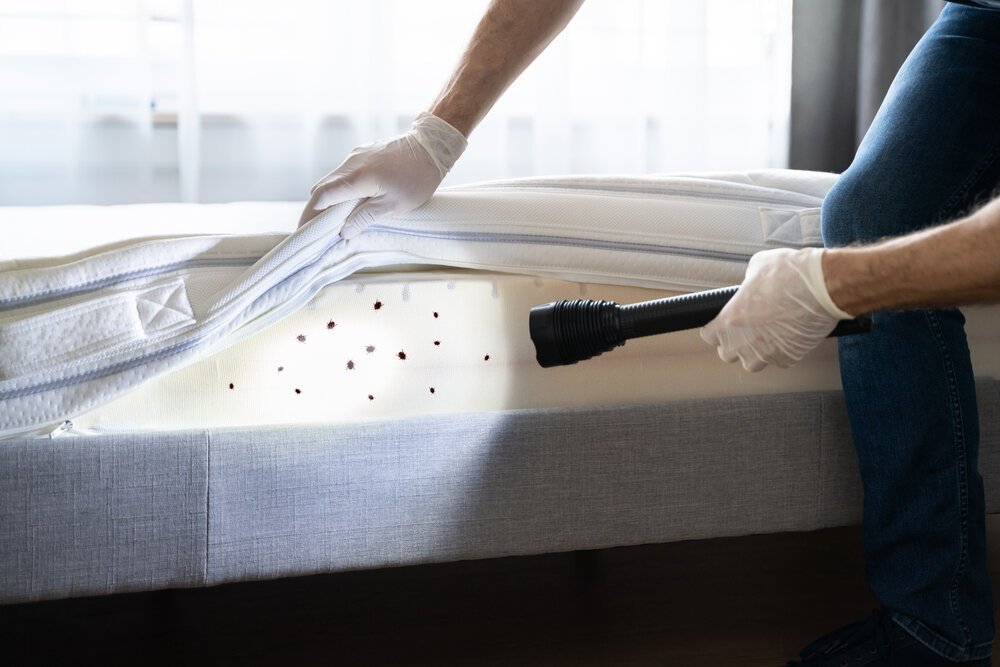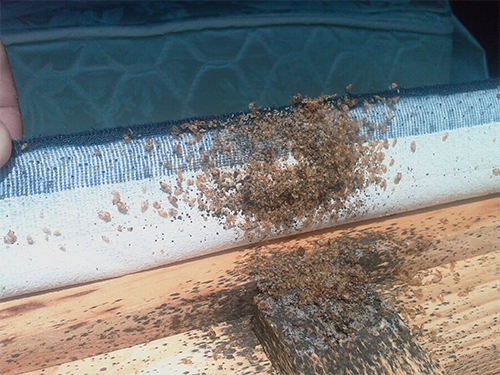Local Bed Bug Exterminator: DC Heat Treatment Services Available
Wiki Article
Checking Out the Science Behind Bed Insect Warm Treatments as a Sustainable Bug Monitoring Approach
One such method that has actually obtained grip in current years is the usage of heat therapies to combat bed bug problems. The ins and outs of how heat effectively eliminates bed pests and the more comprehensive ramifications for sustainable insect management practices make this a subject worth checking out even more.Bed Bug Warmth Treatment Process

Thermal Death Factor for Bed Pests
Exposing bed pests to raised temperature levels past their thermal resistance array is crucial for accomplishing efficient obliteration in heat treatment procedures. The thermal death point for bed insects refers to the temperature level at which these pests can not make it through. Study indicates that bed insects start to perish when revealed to temperatures over 113 ° F(45 ° C) for a continual duration. As the temperature level increases, so does the mortality rate of bed bugs. At around 118 ° F(48 ° C ), bed bugs begin to die rapidly, with a death rate of virtually 99% within mins of exposure. This shows the level of sensitivity of bed bugs to heats and highlights the effectiveness of warmth therapies in getting rid of infestations. By reaching and maintaining temperature levels above the thermal fatality point for bed pests, pest administration specialists can guarantee thorough removal of bed insect populaces, including hard-to-reach areas where chemical therapies might be much less effective. Comprehending the thermal fatality point for bed insects is necessary for applying effective warmth treatment techniques and accomplishing sustainable insect management end results.Benefits of Heat Treatments
Having moved here actually developed the vital thermal fatality factor for bed insects, it is critical to currently check out the significant advantages that warmth treatments use in properly eliminating these resilient bugs. One of the primary advantages is that warmth can pass through deep right into gaps and cracks where bed bugs hide, making sure that even the most hard-to-reach areas are warmed to dangerous temperatures.Additionally, warm therapies are environmentally friendly and non-toxic, making them a sustainable pest management approach. Unlike chemical pesticides, warmth treatments do not leave dangerous residues that can position dangers to human wellness or the atmosphere. This aspect is particularly important in sensitive environments such as health centers, institutions, and suburbs where chemical usage might not be preferable.
Furthermore, warm treatments have a high success price in eliminating bed bug infestations in a solitary therapy, minimizing the need for numerous gos to and decreasing disruption to owners. This efficiency not just conserves time and cash yet additionally offers tranquility of mind to those handling bed insect issues.
Efficiency of Warm Therapy

Warm therapies have actually the included advantage of killing bed insect eggs, which are commonly immune to traditional chemical treatments. Generally, the performance of warmth treatments in eliminating bed insect invasions makes them a trusted and sustainable bug monitoring approach.
Sustainable Pest Management Perks
Implementing lasting parasite monitoring practices supplies lasting advantages for both the atmosphere and public health. By utilizing approaches such as warmth treatments for insect control, we can reduce the dependence on unsafe chemical pesticides that can have damaging impacts on environments and human health and wellness - DC exterminator. Sustainable parasite administration techniques help in maintaining biodiversity by targeting certain insects without harming non-target microorganisms, consequently maintaining a well balanced ecological community
Moreover, lasting bug monitoring practices contribute to the total health and wellness and well-being of the general public. By reducing direct exposure to hazardous chemicals used in typical insect control approaches, warm therapies offer a more secure option for parasite administration in residential, industrial, and public rooms. This reduction in chemical use also assists in preventing chemical residues from polluting air, soil, and water, protecting ecological high quality.
Conclusion
Finally, bed bug warmth treatments have been revealed to be a efficient and lasting parasite management approach. The thermal death factor Check This Out for bed pests makes them prone to warmth treatments, which have countless benefits over conventional chemical therapies. The effectiveness of warm therapies in eliminating bed insect problems while reducing ecological impact highlights the potential of this technique as a lasting remedy for pest control.The bed bug warm therapy procedure entails raising the temperature within ravaged areas to a level that properly removes bed bugs and their eggs. By reaching and preserving temperature levels over the thermal death point for bed bugs, pest management experts can make certain comprehensive elimination of bed bug populations, including hard-to-reach areas where chemical therapies may be less effective. One of the primary advantages is that heat can penetrate deep right into gaps and fractures where bed insects hide, guaranteeing that even the most hard-to-reach areas are heated to dangerous temperature levels. Unlike chemical therapies that might leave behind resistant populations, warmth therapies use a environmentally friendly and non-toxic Read More Here solution that can penetrate deep right into furnishings, walls, and various other hard-to-reach locations where bed insects hide.
The thermal fatality factor for bed bugs makes them susceptible to warmth therapies, which have many advantages over traditional chemical therapies.
Report this wiki page